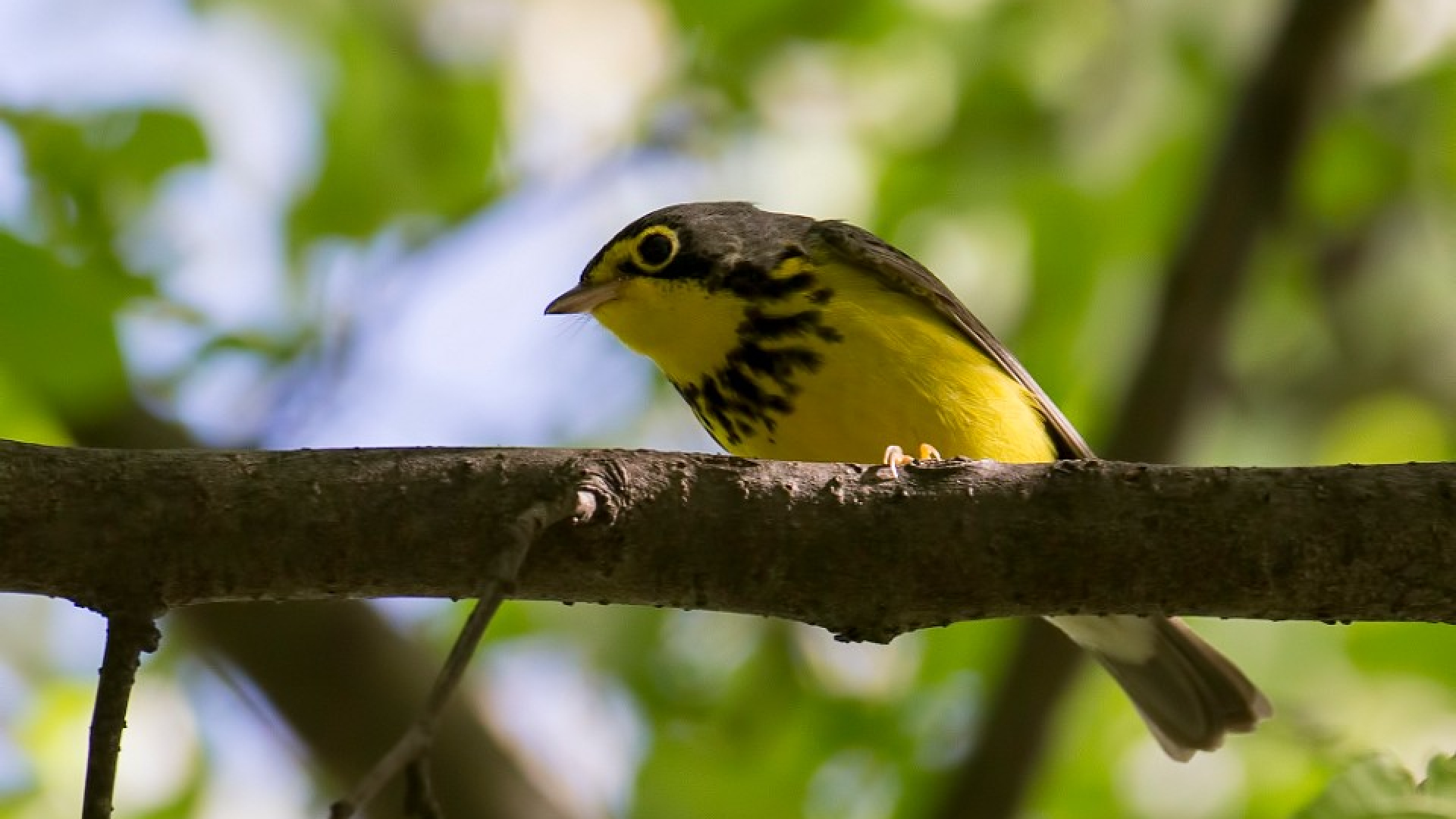Another year of the GABC
Every year, the transition from spring into summer in the Adirondacks is marked by the Great Adirondack Birding Festival (GABC), hosted by the Paul Smith’s College VIC. I once again helped lead a couple of trips, and as usual I led the hunt for birds in Madawaska. It is one of my favorite places to explore in the region, and a place that I am always looking for an excuse to visit.
Loons, Warblers, and Vireos – and a whole lot more!
With such a large area, there are a number of approaches folks can take to investigate Madawaska, but as we left on the first of two trips I led, I decided we would mostly work our way along Blue Mountain Road – which can be a full day by itself. Our route began along Keese Mills Road in Paul Smiths, and a short distance after turning onto it we stopped for a Common Loon, which sat quietly on a small body of water just off the road. We were soon distracted by songs from the woods and edge habitats, finding species like Northern Parula, Common Yellowthroat, and Red-eyed and Blue-headed vireos. A short distance further we paused for Broad-winged Hawks overhead.
Those were the first of many stops we made along the road, and we began to accrue a long list of species while enjoying great looks at many of them. Soon our warblers included Yellow-rumped, Pine, Black-and-white, Black-throated Green, Ovenbird, and American Redstart, and the view we had of a Blackburnian Warbler was mesmerizing. We paused near the gatehouse, which marks the turn onto Blue Mountain Road, watching Barn Swallows, Tree Swallows, Chimney Swifts, and Ruby-throated Hummingbirds feed. I often find Mourning Warblers in that stretch of road too, but we didn’t note any singing on that day. We stopped again at the bridge over the St. Regis River, finding more of the same species, as well as Alder Flycatcher and Eastern Phoebes.
Another of my favorite stops along the road is one of the first – and best – stretches of boreal habitat birders reach as they drive toward Indian Rock Parking Area. As I planned for us to do, we spent considerable time there, walking the road slowly and finding Alder Flycatcher, Yellow-bellied Flycatcher, Red-breasted Nuthatch, Golden-crowned Kinglet, and Nashville, Magnolia, and Canada Warblers – the latter of which offered nice looks. We also had great views of a Northern Waterthrush – there are always a few of them singing in that location. A Ruby-crowned Kinglet sang its bubbly song, and just when we were about to get back into the cars a family group of Gray Jays arrived in search of food. But they didn’t approach us like the more habituated jays of Bloomingdale Bog and we watched them feed and call to each other, seemingly ignoring us.
Grouse!
With so much to see on the road, it was a small feat to even make it to Indian Rock parking area. We found a fairly cooperative Ruffed Grouse just before we stopped, and our caravan of cars was able to watch it strut off into the brush. It proved to be a harbinger of more exciting grouse to come.
From the parking area, it is about a mile-and-a-half walk to Madawaska Pond, and I had no plans to go all the way there. Instead, we would search some of the best boreal habitats on the initial half mile or so of the trail. We set off and were soon finding many of the same species we had seen along the road, although the warmth of the late morning sun was starting to hush up the forest. After a short distance I noticed a dust bowl, usually made by a grouse or some other large bird as it cleaned itself off in the dirt. Then I noted another. And then another. Thanks in part to a DEC recovery program, Madawaska is one of the few places in the state to find Spruce Grouse, and while I had told the participants not to plan on this, the bowls made me a touch hopeful that we might become lucky.
Sure enough, as we rounded a bend a male Spruce Grouse sat in the grass along the fringe of the trail, and I quietly pointed it out to the participants, who seemed to collectively hold their breath behind smiles, snapping a few photos. For my part, I hadn’t brought my camera — a great example of planning and preparedness. After a few minutes, the motionless bird decided it had waited long enough for us to leave, and it scampered across the trail and out of sight, provoking everyone into an animated conversation about the find.
We walked a short distance further before turning around and driving back out for lunch at the VIC. We had found nearly 60 species on the morning, including 15 species of warblers, but the grouse was the most arresting topic of discussion.
Summer offers great birding across the North Country, with so much to explore and see in a short period of time. Check out our outdoor recreation, lodging, and dining pages to learn more!
